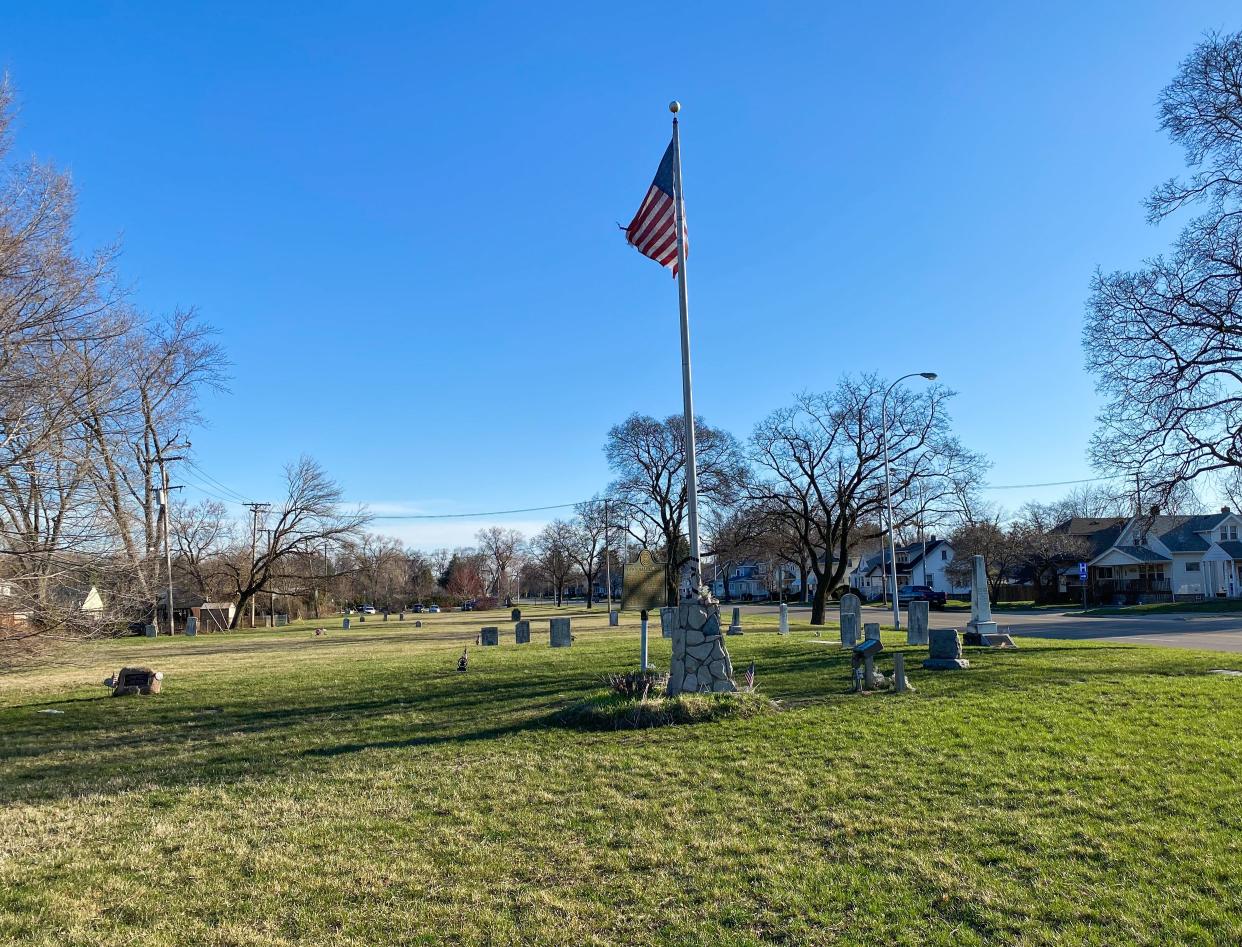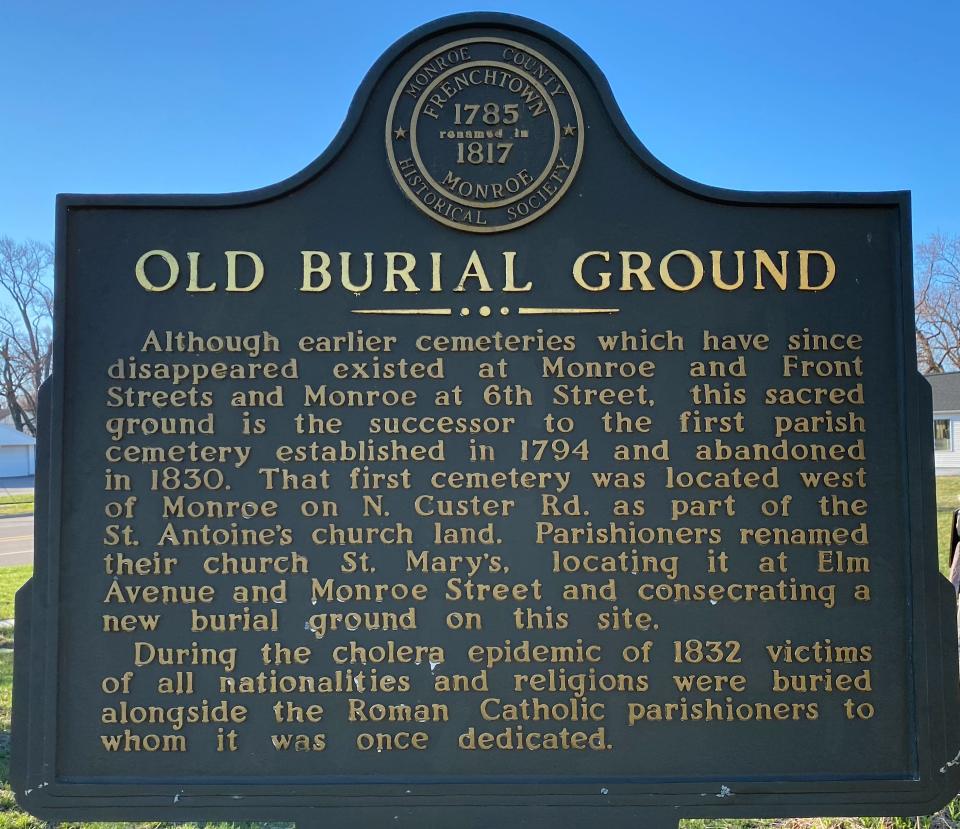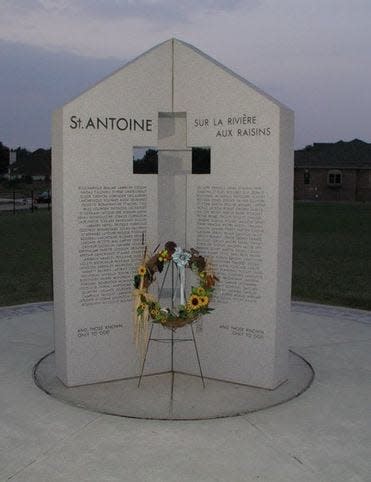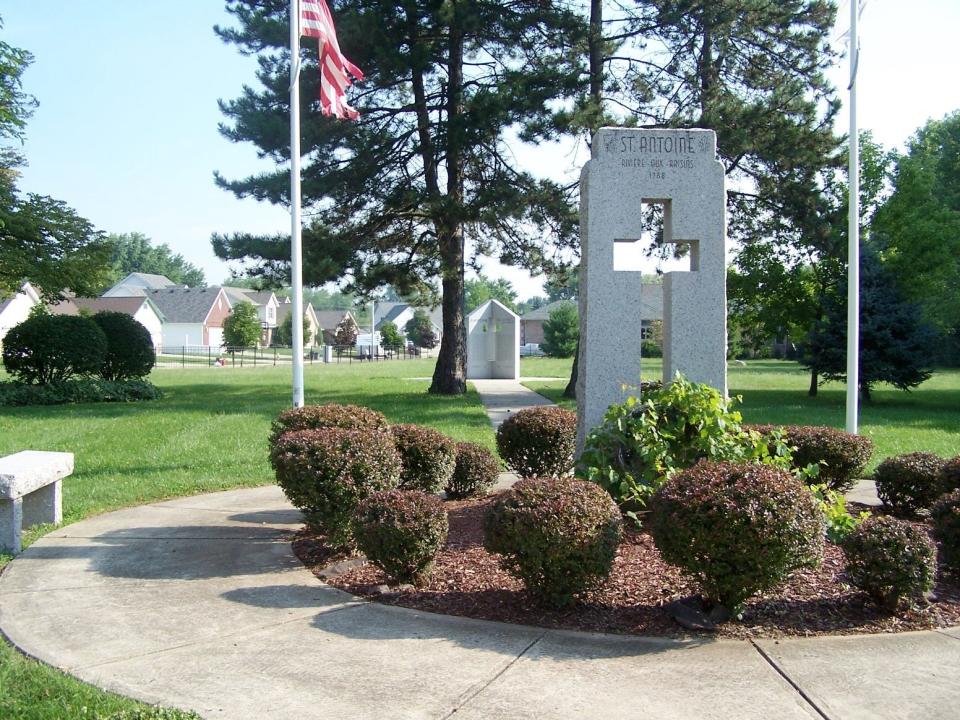Monroe County history: The history of the Old Burial Ground

The Monroe County Historical Commission and the Monroe County Museum have joined forces since 2019 to update and install new versions of Michigan Historical Markers throughout Monroe County.
This effort included a review of the content of each marker to allow for appropriate updating of content as well as the logistics associated with removal of the old markers, procurement of the new markers, and new marker installation.

A marker that I often passed by quickly on my way to work at Monroe County Community College was the Old Burial Ground marker located on N. Monroe Street near West Grove Street. The cemetery was the 1830 successor to the original cemetery of St. Antoine’s Catholic Church – officially established on November 16, 1794, according to "The Cross Leads Generations On: A Bicentennial Retrospect," which is a history of Monroe’s St. Mary of the Immaculate Conception Church from 1788 to 1988.
A letter dated that day from the first pastor of St Antoine’s wrote, “On November 16, 1794, the parishioners of the River Raisin unanimously chose St. Anthony of Padua as their patron, and consequently, Mr. Joseph IRAC donated to the parish a piece of land measuring three arpents less 1 ½ perches long by eighty arpents deep, bounded by the land of Mr. Irac on one side, the land of Joseph Belleaire on another side, and the land of the abovementioned donor Mr. Joseph Irac on the other side; which donation of three arpents less 1 ½ perches by eighty arpents deep, the chief trustee Joseph Jobin and the two other trustees Jacques Prudent and Antoine Campeau accepted in the name of the parish with consent of all parishioners present.”

An arpent is an old French unit of land area equivalent to 3,420 square meters (about 1 acre), the standard measure of land in those areas settled during the French regime and still used in Quebec, Canada, some parishes in Louisiana and other French territories. A perch is considered to measure just over 30 square yards or .00625 acre.
The second pastor of St. Antoine’s, French-born Sulpician Father Jean (John) Dilhet -- who was installed as pastor on July 1, 1798 by Father Michael Levadoux, Pastor of St. Anne Catholic Church, Detroit, and Vicar-General of the Bishop of Baltimore – discovered that the donated land had never been formally and legally transferred to St. Antoine’s. As a result, titles need to be secured, as well as the acknowledgment of quit claim deeds (releases of a party’s interest in a property without reason) and registering this information at the area civil office of the territory.
The area was officially known as Claim 648 and encompassed 99.98 acres known as “St. Antoine Church Farm” – located off N. Custer Road. It was one of the River Raisin’s French “ribbon farms” – farms which had some river frontage (to facilitate water transportation for shipping) and extending in a narrow strip away from the water, sometimes for miles.

A “new” small brick church for St Antoine’s was built in 1828 on the former Vincent Soleau property north of the river and existed on the property until the dedication of St. Mary of the Immaculate Conception Church in Monroe in 1845. It was identified as the “Fairgrounds Church” because of its Noble Avenue location. This property was near the future site of the original county fairgrounds located behind the current St. Mary Church (Monroe County had been established in July, 1817). It was never fully completed and razed in 1845.
In 1832, the Old Burial Ground served as a burial site for all faiths and nationalities during the cholera epidemic of that year.
This article originally appeared on The Monroe News: Monroe County history: The history of the Old Burial Ground

